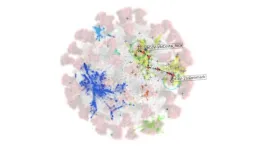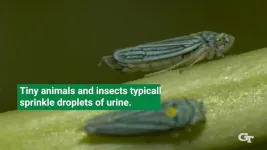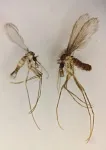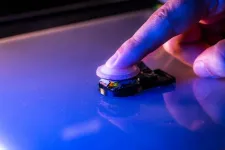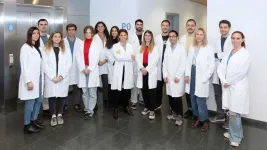The findings of the trial—which was designed and conducted in consultation with the U.S. Food and Drug Administration (FDA) and funded by Boston Scientific Corp.—suggest that the drug-coated balloon offers an effective treatment strategy for the management of coronary in-stent restenosis, or blockages recurring within previously placed stents. On March 1, the FDA approved the paclitaxel-coated balloon evaluated by the BIDMC-led team, representing the first such balloon to be approved for the treatment of coronary disease in the United States.
“Drug-coated balloons have emerged internationally as an alternative treatment option, but despite promising international data, they have not been previously evaluated or approved for use in the United States,” said lead investigator Robert W. Yeh, MD, MSc, MBA, director of the Richard A. and Susan F. Smith Center for Outcomes Research in Cardiology and section chief of Interventional Cardiology at BIDMC. “Even with advances in stent technology, patients with coronary in-stent restenosis continue to comprise approximately 10 percent of individuals undergoing angioplasty interventions each year. In particular, patients with multiple prior stents have very poor long-term outcomes. There's growing sentiment that drug-coated balloons could address an unmet clinical need among patients with coronary artery disease in the United States.”
Each year, millions of people around the world undergo coronary angioplasty, a non-surgical intervention to treat blockages in the arteries that supply blood to the heart. In one variation of the procedure known as balloon angioplasty, a deflated balloon attached to a catheter is inserted into a narrowed artery. Once in position, the balloon is inflated, opening up the narrowed blood vessel and restoring blood flow to the heart. While balloon angioplasty is highly effective, five to ten percent of patients experience in-stent restenosis—a re-narrowing of the treated artery and recurrence of symptoms that requires additional repair—within a year of the procedure.
The multicenter randomized trial, known as AGENT IDE, enrolled participants with in-stent restenosis, all of whom had high rates of coronary risk factors; more than half had diabetes and nearly 80 percent previously had two or more major coronary arteries partially or completely blocked. Among the 600 enrollees, 406 were randomized to receive the paclitaxel-coated balloon catheter and194 to receive an uncoated balloon catheter. Clinical follow-up was performed in hospital at 30 days, six months and 12 months following the procedure and will continue through five years.
Participants were monitored for three primary endpoints: a relapse necessitating revascularization, or another procedure to restore blood flow in the blocked artery; myocardial infarction, or a heart attack caused by lack of blood flow to the heart; and sudden cardiac death.
At one year out, Yeh and colleagues demonstrated that the drug-coated ballon was superior to an uncoated balloon with respect to the likelihood of patients experiencing one or more of these endpoints. Eighteen percent of participants in the experimental group experienced one or more of the primary endpoints, versus 29 percent in the control group. Similarly, those who received the drug-coated balloon were statistically significantly less likely to require revascularization (13 percent versus 25 percent) or have a myocardial infarction (6 percent versus 11) than those who received an uncoated balloon. The scientists saw no statistically significant difference in the rates of cardiac death between the two groups (3 percent versus 1.6 percent).
“The participants in this trial represented a patient group at very high risk for recurrent restenosis,” said Yeh, who is also the Katz Silver Family Professor of Medicine in the Field of Outcomes Research in Cardiology at Harvard Medical School. “More than 40 percent of participants had multiple prior stents. Nevertheless, treatment with the drug-coated balloon had a consistent relative risk reduction and numerically greater absolute risk reduction in events. A drug-coated balloon may be particularly useful in the setting where additional stenting would result in three or more layers of stent which would limit future therapeutic options.”
Co-authors included Richard Schlofmiz, MD, of Saint Francis Hospital; Jeffrey Moses, MD, and Ajay J. Kirtane, MD, SM, of Columbia University Irving Medical Center/New York Presbyterian Hospital and the Cardiovascular Research Foundation; William Bachinsky, MD, of University of Pittsburgh Medical Center; Suhail Dohad, MD, of Cedars Sinai Medical Center; Steven Rudick, MD, of Lindner Center for Research and Education at Christ Hospital; Robert Stoler, MD, at Baylor Scott & White Heart and Vascular Hospital; Brian K. Jefferson, MD, at HCA Tristar Centennial Medical Center; William Nicholson, MD, at Emory University Hospital; John Altman, MD, at Saint Anthony Hospital; Cinthia Bateman, MD, at South Denver Cardiology; Amar Krishnaswamy, MD, at Cleveland Clinic Foundation; J. Aaron Grantham, MD, at Saint Lukes Hospital of Kansas City; Frank J. Zidar, MD, at Austin Hart; Steven P. Marso, MD, at Overland Park Regional Medical Center; Jennifer A. Tremmel, MD, MS, at Stanford University Medical Center; Cindy Grines at Northside Hospital Cardiovascular Institute; Mustafa I. Ahmed, MD, at University of Alabama at Birmingham; Azeem Latib, MD, at Montefiore Medical Center Albert Einstein College of Medicine; Benham Tehrani, MD, and Wayne Batchelor, MD, at the Innova Schar Heart and Vascular Institute; J. Dawn Abbott, MD, at Lifespan Cardiovascular Institute, Rhode Island Hospital; Paul Underwood, MD, and Dominic J. Allocco, MD, Boston Scientific Corporation. This study was supported by Boston Scientific Corp. Quantitative coronary angiography was conducted by Baim Institute for Clinical Research, Inc, an independent angiographic core laboratory.
Yeh reported receiving personal fees and grants from Boston Scientific during the conduct of this study; as well as grants and personal fees from Boston Scientific, Abbott, Vascular and Medtronic, and personal fees from the US Food and Drug Administration, Elixir Medical, Shockwave Medical and infrared X outside the submitted work. Please see the publication for a complete list of conflict of interest disclosures.
About BIDMC
Beth Israel Deaconess Medical Center is a leading academic medical center, where extraordinary care is supported by high-quality education and research. BIDMC is a teaching affiliate of Harvard Medical School, and consistently ranks as a national leader among independent hospitals in National Institutes of Health funding. BIDMC is the official hospital of the Boston Red Sox.
Beth Israel Deaconess Medical Center is a part of Beth Israel Lahey Health, a health care system that brings together academic medical centers and teaching hospitals, community and specialty hospitals, more than 4,800 physicians and 38,000 employees in a shared mission to expand access to great care and advance the science and practice of medicine through groundbreaking research and education.
# # #
END
